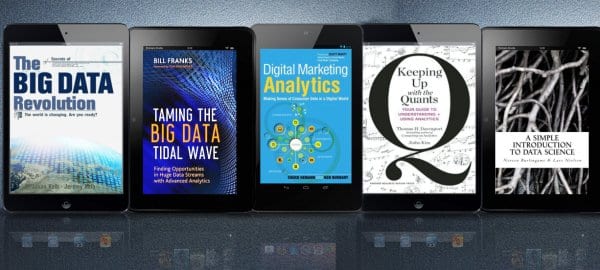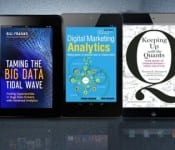Top 10 Books for Business Intelligence and Data Analytics – Part 2


6. The Big Data Revolution by Jason Kolb and Jeremy Kolb (2013)
“There is a revolution on the horizon: the Big Data Revolution. For Decades we have collected data, but until recently we never collected it in large enough quantities to even glimpse its potential, nor have we had the right idea about what to do with it. But now we have recently seen that potential, and a few pioneers are starting to explore it and harness the insights in it for exponential gains in efficiency, productivity, and profit.”
7. Taming the Big Data Tidal Wave: Finding Opportunities in Huge Data Streams with Advanced Analytics by Bill Franks (2012)
“Big data is the next wave of new data sources that will drive the next wave of analytic innovation in business, government, and academia. These innovations have the potential to radically change how organizations view their business. The analysis that big data enables will lead to decisions that are more informed and, in some cases, different from what they are today. It will yield insights that many can only dream about today.”
8. Digital Marketing Analytics: Making Sense of Consumer Data in a Digital World by Chuck Hemann and Ken Burbary (2013)
“The practice of digital analytics involves both tools and the human analysts who use them. Tolls make the data collection process easier and give an analyst a jumpstart on providing actionable insights. They also provide a way to scale data collection and insights across a large company. The tools are critical, but so is the analyst. The analyst provides valuable context on the business, the goals of the data collection and research, the ability to cross-reference multiple data sets toward the solution of a business problem, and most importantly, the selection of the tools themselves.”
9. Keeping Up with the Quants: Your Guide to Understanding and Using Analytics by Thomas H. Davenport and Jinho Kim (2013)
“Analytics can be classified as qualitative or quantitative according to the process employed and the type of data that are collected and analyzed. Qualitative analysis aims to gather an in-depth understanding of the underlying reasons and motivations for the phenomenon. Qualitative analytics are often useful tools for exploratory research – the earliest stage of analytics. Quantitative analytics refers to the systematic empirical investigation of phenomena via statistical, mathematical, or computational techniques. Structured data is collected from a large number of representative cases and analyzed statistically.”
10. A Simple Introduction to DATA SCIENCE by Lars Nielsen and Noreen Burlingame (2012)
“Data Science remains a science for which tools are still being invented – a science in a state of flux. ‘There are vexing problems slowing the growth and the practical implementations of big data technologies,’ writes Mike Driscoll. ‘For the technologies to succeed at scale, there are several fundamental capabilities they should contain, including stream processing, palatalization, indexing, data evaluation environments and visualization.’ And all this evolution is ongoing.”
Solutions Review participates in affiliate programs. We may make a small commission from products purchased through this resource.































